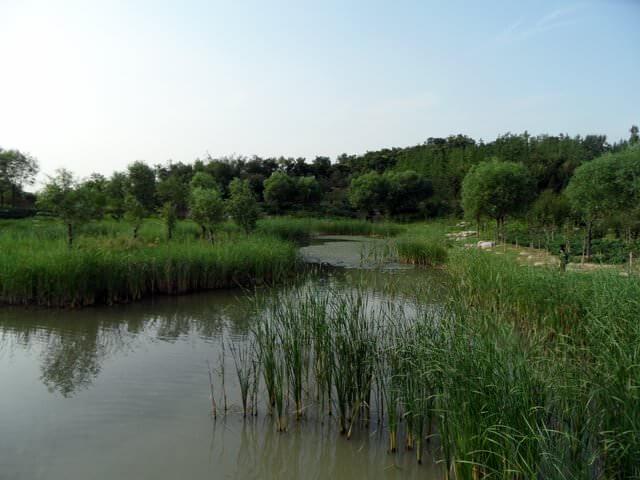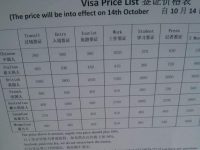
The Olympic Forest Park was planted back in 2003 to provide assurance to the International Olympic Committee that the 2008 Beijing Olympics would be acceptably environmentally friendly by absorbing the increased carbon emissions. It sits at the northern end of the city’s central axis, directly above the Olympic Green Bird’s Nest area. The soil excavated from the construction of the Bird’s Nest, Water cube and other buildings were used to create artificial hills to accommodate traditional feng shui designs of hills and lakes amongst the 530,000 trees of the 680 hectare site.
Stats They Show Off: The park will absorb 7,200 tonnes of carbon emissions and purify 5,400 tonnes of oxygen a year, which must benefit such a heavily polluted city.
Stats They Don’t: 1.5 million of the city’s poorest people were displaced during the construction and moved to the city’s outskirts – not ideal if you can’t afford a vehicle to reach your workplace1
[wp_geo_map]During the games the archery, tennis and hockey were all held here, but today none of that is in evidence. The park is now a haven from the hustle and bustle of the city. Only bicycles and a few very slow electric cars are allowed within, so families are free to roam in peace and quiet. The park is bisected by the 5th ring road, but remains quiet and tranquil, so there is still a decent array of small wildlife living in the park. The large lakes are shared by a few pedalos and tens of thousands of koi carp, which are getting constantly fed by visitors and are now looking a little chubby.
The park is also home to a large number of sculptures, including a huge metal array which I couldn’t quite figure out, as well as an open air theatre.
The forest park is directly connected to the main Beijing Olympic Park, so we walked up and dropped into one of the many nearby chain restaurants for dinner. We chose Bellagio, which has had many positive reviews, seemingly all undeserved. The plates looked like works of art, but the real problem was that they just didn’t taste very good – starters were too cold, the meat in a plate of ribs consisted of at least 90% bones and 10% fat and the veg was just dull. The only saving grace was a bowl of egg noodles with some sesame sauce poured on top, although I could have made that at home for a tenth of the price. In the end it cost twice as much as a regular meal, and was deeply disappointing.
By now it was dark, so we went back to the Olympic Green to see it at night. We’d been assured it would be all lit up and weren’t disappointed. The Bird’s Nest stadium appeared as layers of red and yellow and the press pagoda rotated through a multitude of colours. In the evening the park comes to life as hundreds or possibly thousands of Beijingers stroll about, eat picnics or fly kites. The backdrop to all this activity was the water cube, whose bubbly sides were now gently rippling rivers of colour. It was quite mesmeric and we could have stood there for hours, but after a near garrotting by a rogue kite string we made our excuses and left with the impression that overall the day had made a welcome change from the normal pace of Beijing life.
1 http://www.cohre.org/mega-events







Pingback: Beijing Olympic Park
Pingback: What to Do in Beijing - Travel Tips for Beijing, China